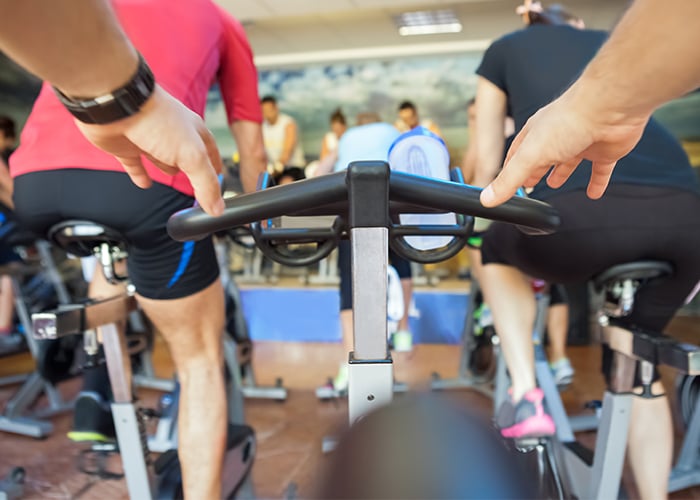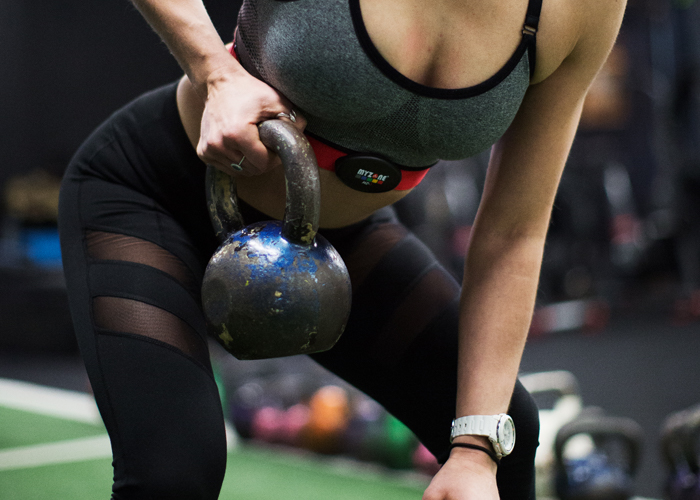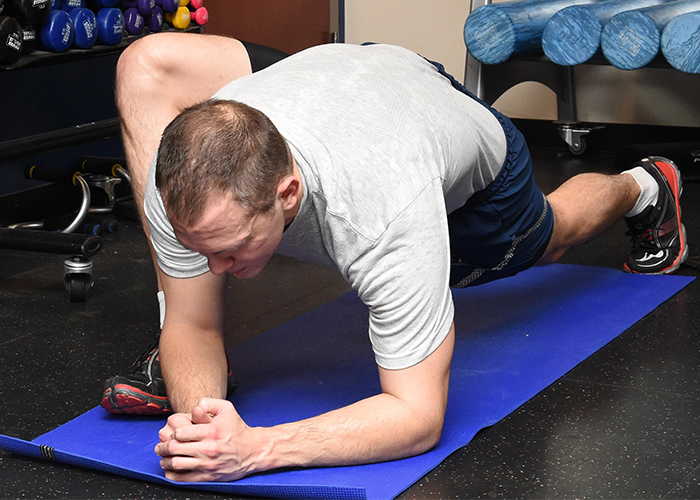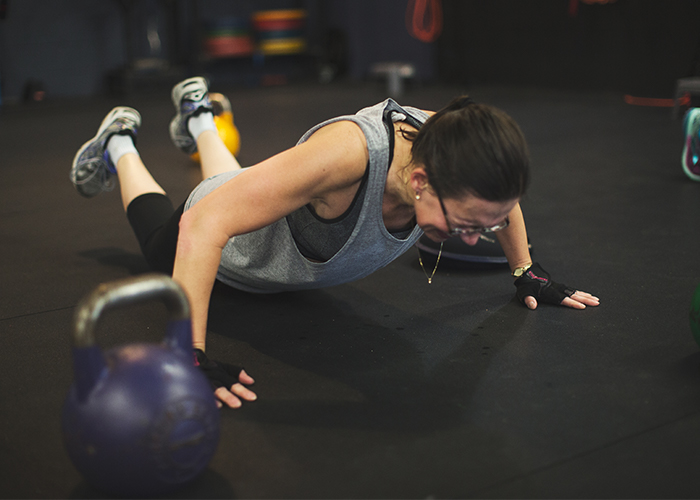Earning MEPs With Resistance Training
What mode of exercise do you prefer – cardio or resistance training? Do you find that you earn more MEPs when performing one mode over the other? Take a look at your MYZONE fitness tracking app to see what works best for your body.
In general, we probably earn more MEPs during our cardio sessions than during our resistance training sessions; however, this will depend on many factors. This blog post is dedicated to offering you some strategies around earning MEPs during your resistance training sessions.
We’ll begin with some definitions so that we are all on the same page with the language used going forward. We’ll define cardiorespiratory endurance and muscular fitness - specifically muscular endurance and muscular strength.

Cardiorespiratory Endurance:
Cardiorespiratory endurance is the ability to perform prolonged large muscle, dynamic exercise at moderate to high levels of intensity. Walking, running, cycling, rowing, and swimming are all examples of cardiorespiratory endurance activities.

Muscular Endurance:
Muscular endurance is the ability of a muscle to remain contracted or to contract repeatedly for a long period of time. The definition of muscular endurance is similar to the definition of cardiorespiratory endurance; however, muscular endurance can refer to an isometric contraction (i.e. holding a plank or wall squat) or a single set of a resistance training exercise and would not challenge the cardiorespiratory system in the same way as prolonged large muscle, dynamic exercise. Unless, one was performing a continuous series of muscular endurance exercises like you would during circuit training. More to come on that later.

Muscular Strength:
Muscular strength is the amount of force a muscle can produce with a single maximum effort. In order to train muscular strength, we must train with loads that challenge our current force production capabilities. This typically means we are moving some heavy weight around for a few reps only.
Training for Cardiorespiratory Endurance vs. Muscular Fitness:
When we train our cardiorespiratory endurance, we typically emphasize training factors like intensity (in terms of heart rate or rate of perceived exertion) and duration (the total amount of time of the session or the duration of intervals, etc.).
When we train muscular fitness, we typically emphasize training factors like load, reps, sets, and rest periods. Below are the training factors for three different types of muscular fitness training (endurance, hypertrophy, and strength):
Muscular Characteristic: Muscular Endurance
- Repetitions: 15-25
- Sets: 2-3
- Rest Period (between sets): less than 30 seconds
- Muscular Characteristic: Muscular Hypertrophy (muscle growth)
- Repetitions: 8-12 (should barely be able to complete last few reps)
- Sets: 3-6
- Rest Period: 30-90 seconds
Muscular Characteristic: Muscular Strength
- Repetitions: 1-6 (should barely be able to complete last few reps)
- Sets: 2-6
- Rest Period: 2-5 minutes
The intensity of resistance training, especially during muscular hypertrophy and strength training, is best measured with load and repetition speed. Heart rate is not the best measure of intensity because heart rate will typically elevate rapidly and then recover for extended periods during each set. We can, however, use heart rate as a measure of intensity for muscular endurance training, especially when designing circuits or supersets that will elevate our heart rate for prolonged periods.You can track your heart rate and fitness zones on your MYZONE fitness tracking app to gauge how your body is performing.
Therefore, if you are looking to mop up MEPs during your resistance training workouts, we recommend targeting muscular endurance and using these 3 strategies:

1. Supersets: A superset is when you stack a few exercises together and move through them in succession with minimal rest. For example, you might choose an opposing muscle group superset like a chest press and a bent over row and move back and forth between those 2 exercises for 2 to 3 sets of 15 to 25 reps before you take a short break. This will keep your heart rate elevated and give one muscle group a little break while you are working the other. You could also choose a superset of exercises that target similar muscle groups, like a squat and a deadlift, and move through those 2 exercises in succession. Be cautious of fatigue if you are using supersets that target the same muscle groups and make sure you are using proper form. To understand more about supersets, visit one of our previous blog posts, here.

2. Circuits: A circuit is a series of exercises performed in a row with minimal rest between exercises. You can perform a whole body muscular endurance circuit by selecting 6 to 8 exercises that target major muscle groups in the lower body, upper body, and core. You can choose whether you will base the circuit duration on the number of repetitions of each exercise or strictly on time. Check out our MYZONE Muscle and Cardio Blast Circuit on a previous post. Below is also a sample whole body circuit. Go through each exercise in sequence and perform repetitions for 30 seconds. Take 10 seconds to transition to the next exercise. After you have performed all 6 exercises, take a 60-second break and then repeat the circuit 2 or 3 times.
- Lower Body:
- Squats
- Back Stepping Lunges
- Upper Body:
- Push Ups
- Bent Over Row
- Core:
- Russian Twists
- Plank Hold

3. Integrate Cardio Intervals: If you really want to boost up your MEPs on MYZONE's fitness tracking app during a resistance training workout, we suggest integrating some cardio intervals into the mix. Try our Low Maintenance Cardio & Muscular Fitness Circuit, or you could use the same examples above for supersets or circuits, but then in between each superset or each exercise of the circuit, integrate several running, cycling, or elliptical intervals of 30 seconds on (work phase) and 30 seconds to recover. Aim to hit YELLOW during the 30-second work phase, and try to recover down to GREEN during the 30-second recovery. Repeat 2 to 3 times, and then move on to your next superset or circuit exercise.
Happy MEPping friends!!! Give these 3 strategies a try and see which one(s) work best for you and your body. And, great news, you are getting your cardio and resistance training done in combination, so if you are short on time, these are great techniques for you!!!
Share your resistance training workouts with us! Use the hashtags #effortrewarded and #myzonemoves when you post your workout pics!
For more tips on how to use the MYZONE fitness tracking app, follow us during Fitness Fridays on Facebook Live (subscribe on MYZONE’s Facebook Page) – 8 am PT, 11 am ET, and check out our MYZONE Moves Podcast on iTunes or Google Play.
Keep moving forward!
Share this
You May Also Like
These Related Stories

March MEP Motivation

Summer Sizzler Core Training Workout



